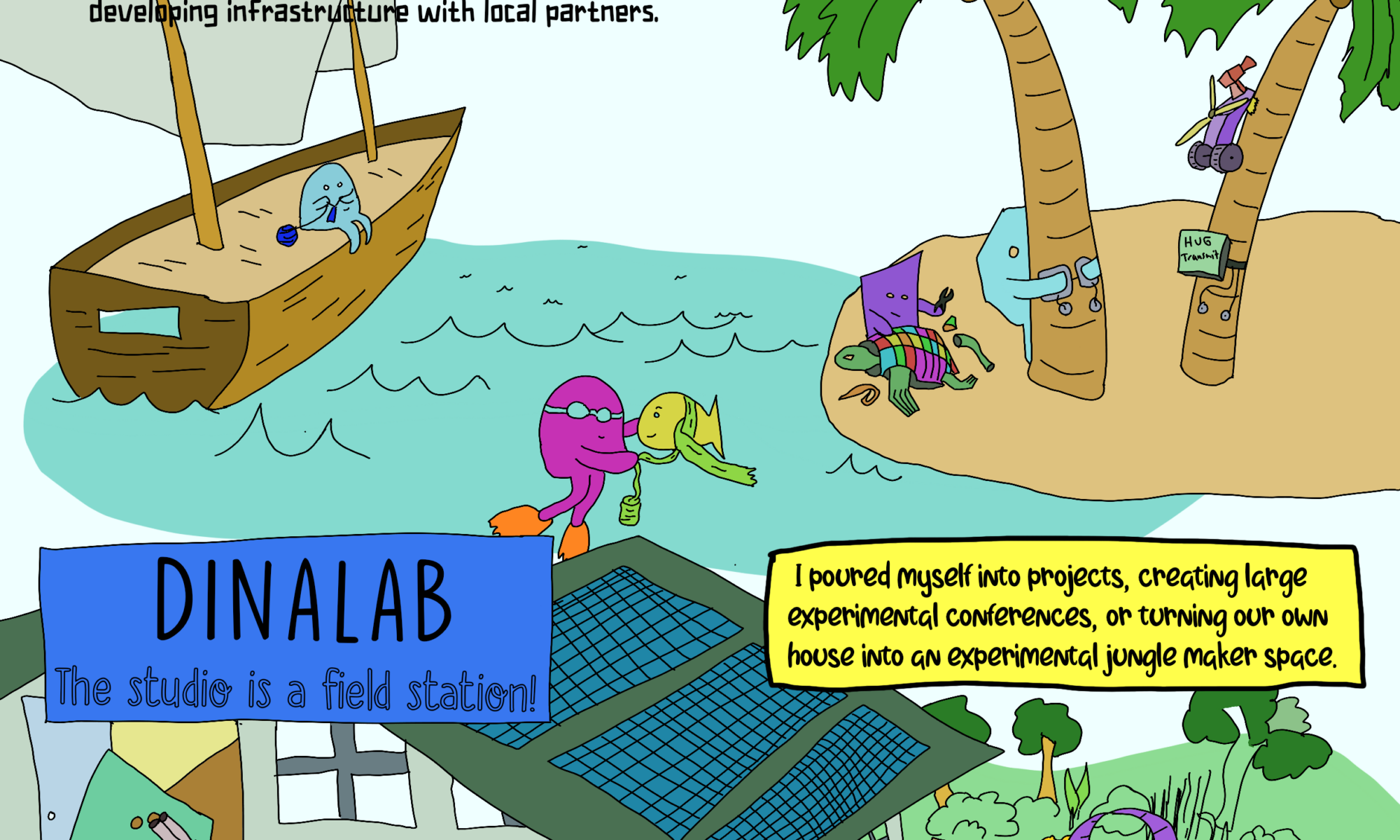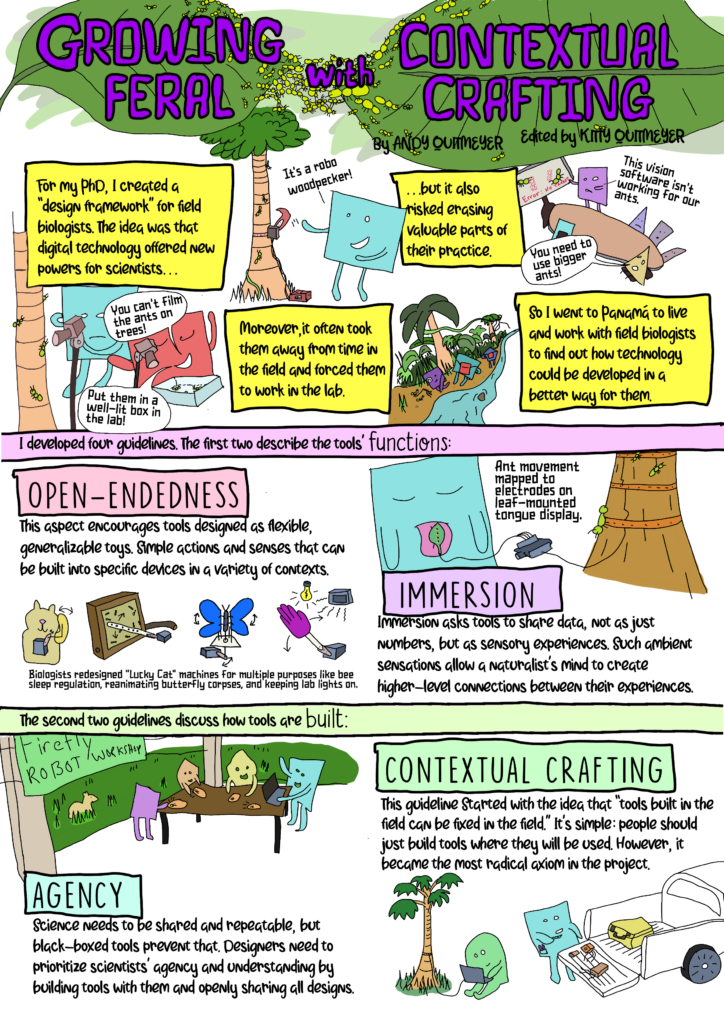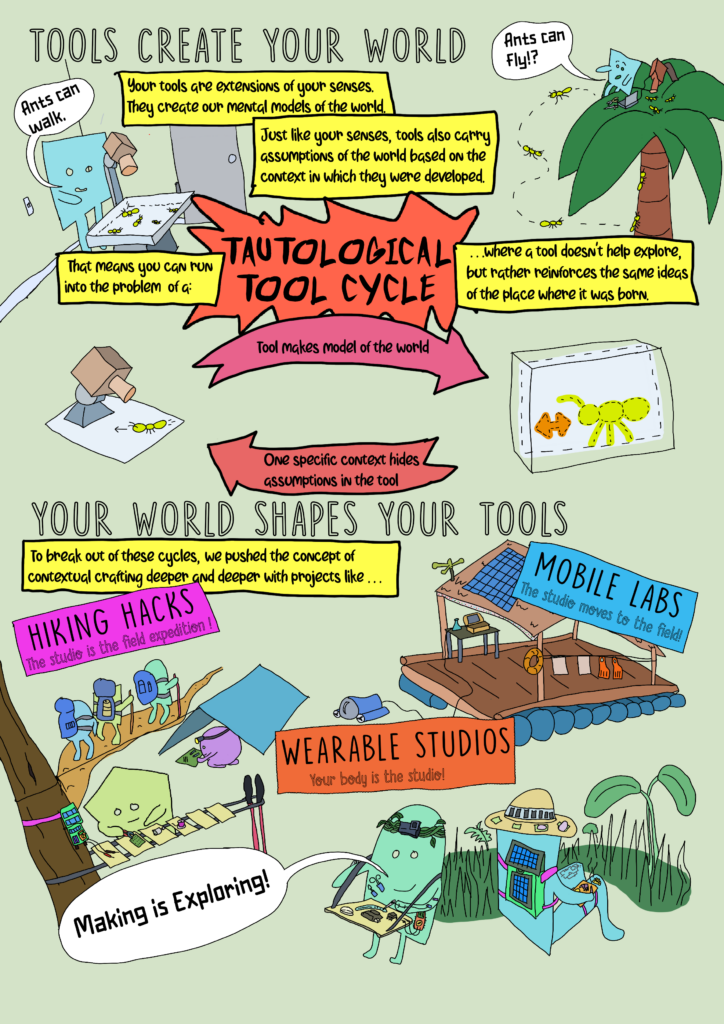In 2024 I was invited by the nice people in the European “Feral Labs” network (that Dinalab is a kind of satellite member of) to write an open-ended essay on “Feralities.”
Over the past half-decade of quitting academia and setting up our own little independent lab, there had been many thoughts and emotions rolling around in my head that I had been wanting to express. This seemed like an opportunity to discuss my feelings on how building things in non human-oriented spaces (i.e. making shit outside) has guided me through my experiences with several institutions. This type of ramshackle making tended to provide an “othering” experience which made a lot of things difficult in my life, but also provided clear views of the machinations of various organizations.
That’s one explanation; though maybe the truth is that I always felt estranged from many of these existing ways of being, and ended up just stubbornly playing with stuff in the forest myself. Either way, I have always found two things invaluable to truly learning:
- Building things
- Taking time to sit an explore a place you are in
So combining crafting with interesting contexts has been the driver of what I tend to do to learn.
This essay was special to me, and I have always felt I express myself better visually than textually. The process of drawing and organizing these ideas also helped hone these nebulous concepts, and more efficiently get across some emotions.
Part of the Feral Labs writing policy that I found neat was that they explicitly had an anti-embargo on the works they were requesting. That is, they stated that they understood that the people they were requesting new works from were busy and might already have things they are working on for other publications, and that was alright with them to share this same publication across multiple formats.
So at the time, I was also the chair of the “More Than Human” track of the “Halfway to the Future” design conference. This conference was intended to solicit entries intended to provoke discussions rather than simply share research results, and that it was an “anything goes” call for crazy ideas. They also encouraged us chairs running the program to submit entries as well for the proceedings of this conference. So I also wrote this essay in tandem with ideas setting up the concepts of this conference. In a twist that I found absolutely hilarious, my essay was the only one of the ones submitted by the committee to get flat out rejected for being too different of a format, and, as one reviewer said, doesn’t belong in the “More Than Human” track of the conference.
So it never ended up actually published in HttF in a very fitting way for an essay about how these ideas never seemed to fit in anywhere but literally outside.
I am sharing it here now because it is an essay I am quite proud of. Kit Quitmeyer helped edit the entire essay and gave wonderful feedback. Also it was a delight to hear her giggling at parts and also every now and then exclaim something like, “oh, now I finally know what you were talking about!”
So that is my wish for you, that this little essay tickles you and also helps enlighten you about somethings I may have been trying to express to you before, but words along didn’t provide me with sufficient means for expressions without accompanying silly shapes and drawings.









